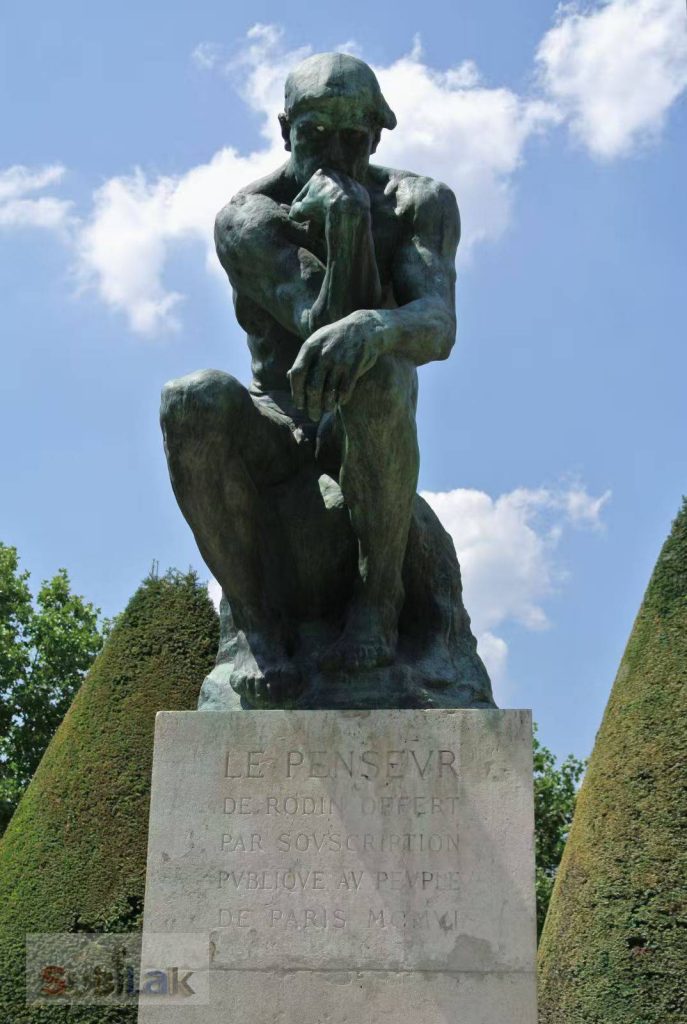
The famous work “The Thinker” by French sculptor Auguste Rodin.
From the perspective of artistic style, the work belongs to realistic sculpture, but it also has a romantic color. The sculpture presents a strong and powerful male image, who bows his head deeply, supports his chin with his right hand, and puts his left elbow on his left knee, lost in meditation. The depiction of muscles is extremely realistic, and every bulge and depression shows the strength and beauty of the human body, as if it contains endless energy, reflecting Rodin’s profound understanding and superb skills of human anatomy.
In terms of symbolic meaning and theme, “The Thinker” was originally part of Rodin’s large sculpture “The Gates of Hell”, which originally showed Dante’s thoughts when facing the scene of hell. Later, this image was separated and became a symbol of human thinking, exploring the truth, and facing suffering. The posture and expression of the character convey a deep pain and struggle, as if he is deeply reflecting on many major issues such as life and society, which triggers the viewer’s thinking about himself and the world.
In terms of creative techniques, Rodin used the changes of light and shadow to enhance the three-dimensional sense and expressiveness of the sculpture. The ups and downs of the figures’ bodies create a contrast of light and dark on the surface, which enhances the visual impact and artistic appeal of the sculpture. At the same time, he abandoned the perfect smooth surface pursued by traditional sculptures, retained the traces of the creative process, and gave the works a sense of reality and vitality, making the sculptures more artistic and unique.

